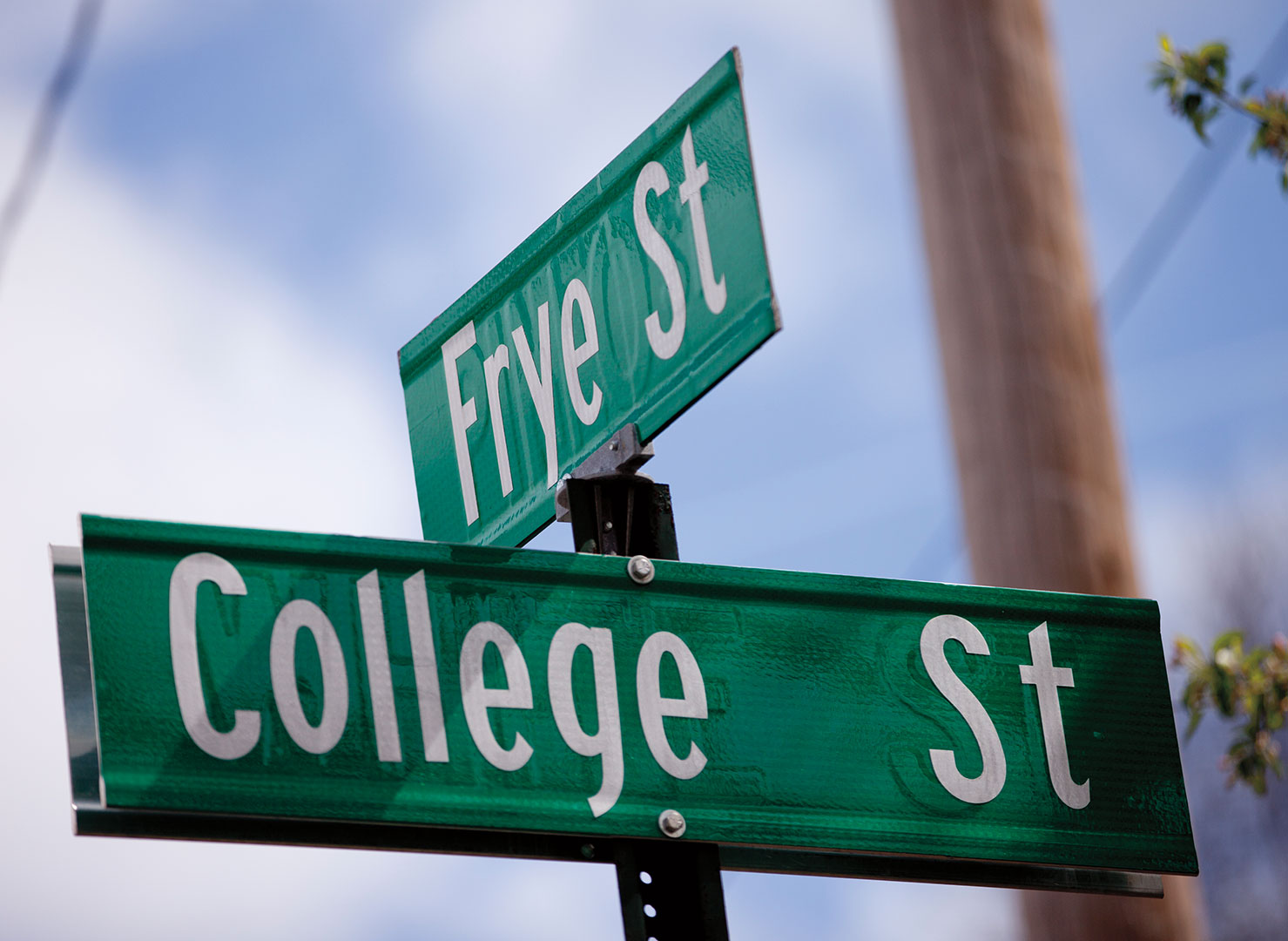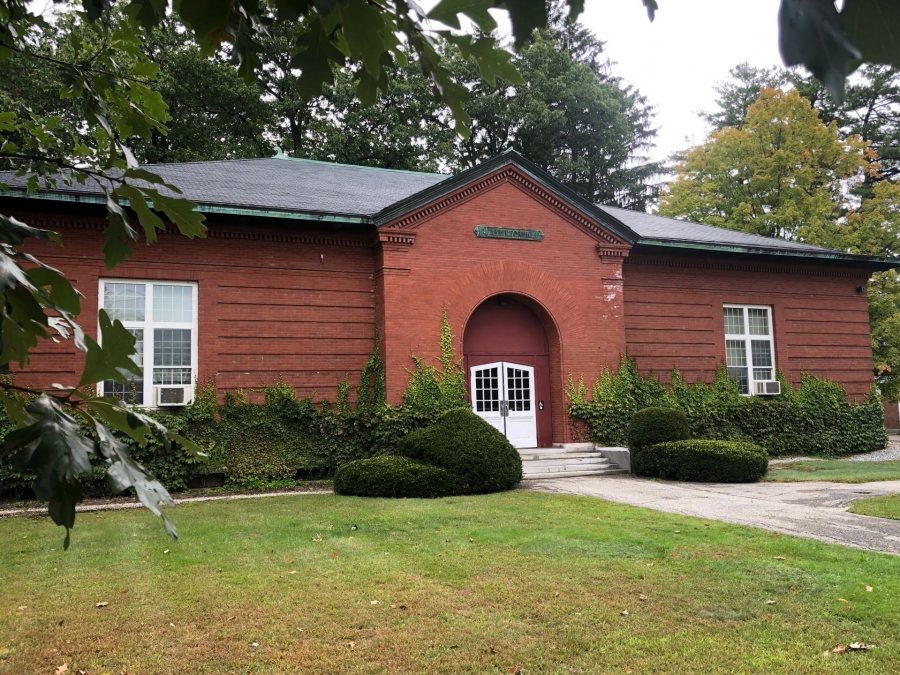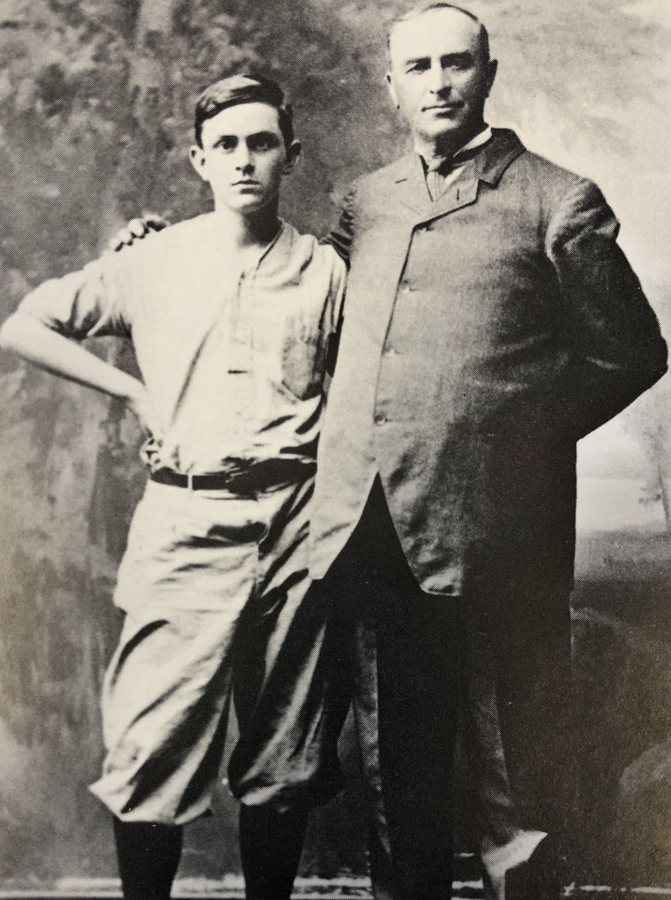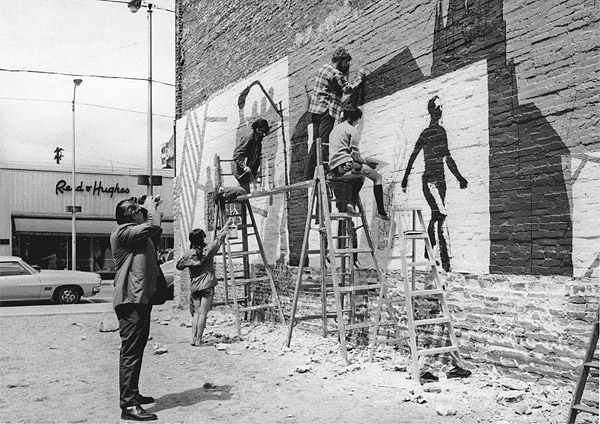
What’s in a Bates Name: Libbey
Dedicated on Oct. 1, 1909, Libbey Forum was donated to Bates by Lewiston textile mill owner W. Scott Libbey.
Once home to the student literary societies, the building then was used for faculty offices and classrooms. It’s now home to Student Financial Services and the Registrar.
Hit the Bricks
The 1917 Bates Catalog said the new Bates building was “probably the most solid and substantial structure in Lewiston.”
When It’s Libbee, Libbey, Libbe
English originally, the name in America has been spelled Libby, Libbey, Libbee, Libbe, Lebby, Lebbey, Lebbee, and Lebbe.
Good to Know
“As a family in America, the Libbeys have been largely respected by their neighbors as men of sterling worth and uprightness and honesty of character,” said a 1920 issue of Americana.
Big Break

A distinctive Bates building, Libbey Forum features a Romanesque entrance and hipped roof. (H. Jay Burns/Bates College)
Born in 1851, W. Scott Libbey started his career as a self-taught telegraph operator. It made the newspapers when he took 6,000 words of Morse code — tens of thousands of electric dots and dashes — without requesting a “break,” or a request for the sender to repeat a word.
Ambitious and inventive, he eventually owned Lewiston’s Lincoln and Cumberland mill buildings and the Lewiston & Auburn Electric Light Co.
He built a hydropower dam above Lewiston’s Great Falls and founded an electric railroad line, the Portland-Lewiston Interurban, which ran between Monument Square in Portland and Union Square in Lewiston.
Libbey “practically hews the fortune out of the very town in which he began,” said Americana.
Libbey Legacy
Libbey, who died in 1914, sent three of his four children to Bates. Son Harold graduated in 1905 and daughters Gertrude and Alla, both Phi Beta Kappa, graduated in 1901 and 1906, respectively. Many descendants have attended Bates.
The fourth Libbey child, son W. Scott Jr., served as a Bates trustee, as did his son, Paul Libbey, who lives in Lewiston and has remained active in the family textile business into his 90s.
The family’s mausoleum is at Riverside Cemetery near campus.
Society’s Sake
Dedicated in 1909, Libbey Forum created important new space for the college’s three thriving literary societies (Eurosophian, Polymnian, and Piaerian), as well as the YMCA and YWCA.
In Bates’ early years, the societies dominated extracurricular life and helped to nurture the tradition of debate. By the mid-1900, Libbey was home to the economics, sociology, and anthropology departments, offering classroom space as well.
Today, Libbey Forum houses the offices of Student Financial Services and the Registrar.
Train of Thought
After announcing his intention to give Bates a building, Libbey traveled widely, studying possible designs.
While it’s been said that Libbey Forum was intentionally designed to resemble a train station, that’s probably apocryphal.
The design features a low, hipped roof and a Romanesque entrance. It was modern for its time — very different from other Bates buildings — yet in keeping with early-1900s buildings having large interior spaces, such as schools and, yes, train stations.




